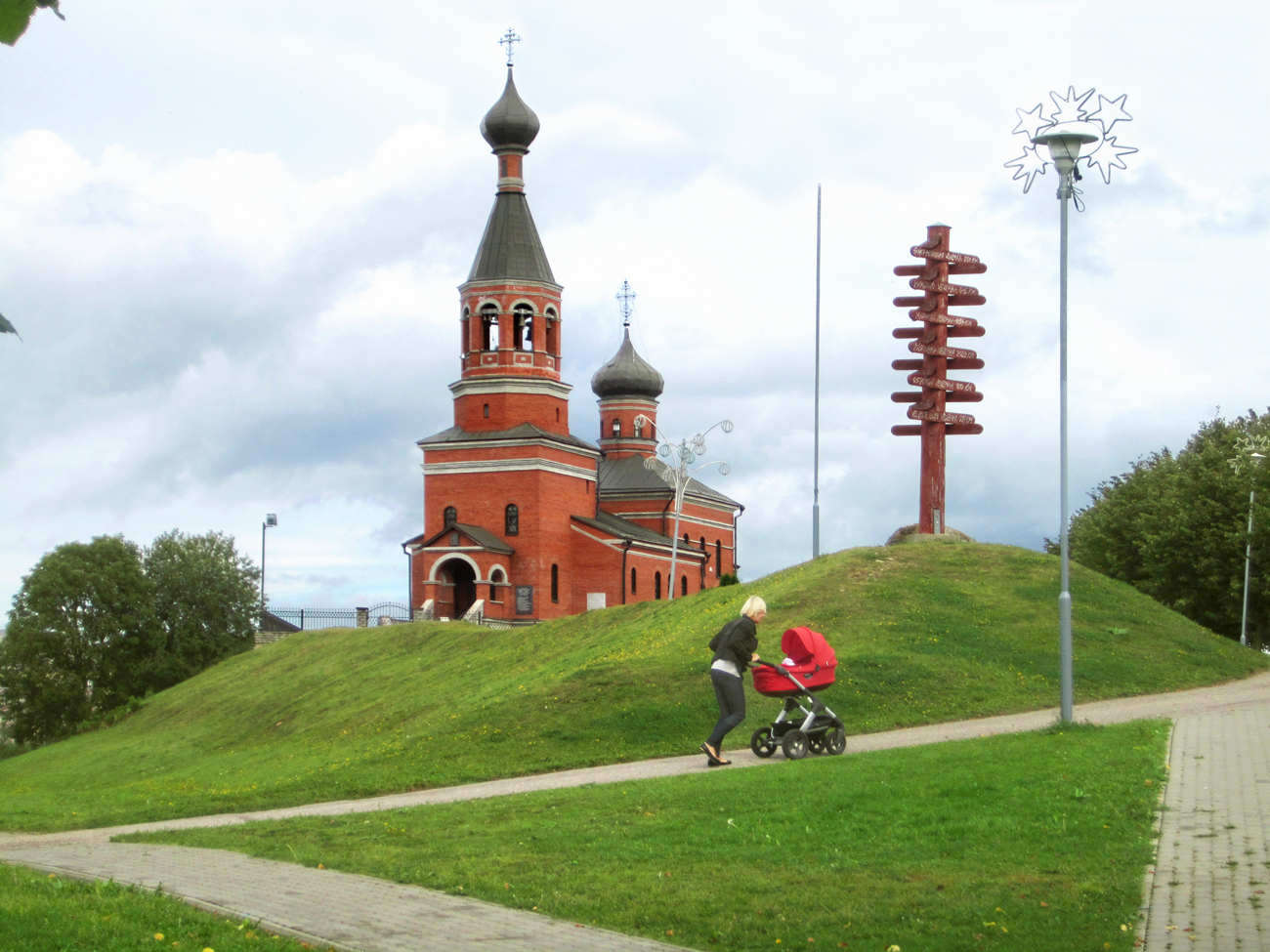The town of Maardu
Today’s Maardu is a clean and pretty town. The majority of houses date from the Soviet period, but no large industrial enterprises strike the eye in the town centre. A church on the highest hill towers over everything else – St Michael the Archangel Church of the Estonian Orthodox Church of Moscow Patriarchy was completed in 1998.

The name Maardu is associated with a manor, first mentioned in written sources in 1397, although the roots lie much further in the past. The ancient village called Marte near the manor can be found in the village list compiled by the Danes in the 1240s, but it disappears from the sources in the 18th century. One reason was probably the establishment of Väike-Maardu cattle farm that used much of the farmlands all around.
The town of Maardu developed from a settlement for workers of the Ülgase phosphorite mine established in the 1920s. When the Ülgase complex burnt down in December 1938, the new phosphorite industry was moved to Maardu. After World War II the enterprise was renamed Maardu Chemical Integrated Works and in the 1970s the Maardu Chemical Plant. The mining area increased constantly, swallowing up the arable lands of nearby villages.
Muuga harbour, completed in the 1980s, and the repositories of oil products from the early 2000s secured the strong industrial image of the area. In 1991 Maardu became a town. Its coat of arms – a white anchor and a pick hammer on a blue shield – conveys the essence of the town perfectly.
Although phosphorite is no longer mined today, Maardu can still be characterised as a small island amongst an industrial landscape. After some quarries were closed in the late 1970s, they were planted with larches and birches, in straight lines with a carefully measured distance between them. Thus an artificial forest was created of trees that normally do not form a forest, and this has become a sight worth seeing. Other quarries were left to nature to sort out, and have become oval ponds of backwater that resemble moats or large ditches.
Maardu lake also has an interesting history, a former bay, which disappeared in the late 19th century. The manor owner wanted to regulate the water level by building a dam, but the dam was destroyed and water flew into Kroodi spring and created Kroodi valley. After that, cattle was grazed at the bottom of the lake. Together with German entrepreneurs, a factory was planned in Maardu in 1939, a new dam was built and water gradually returned. When the phosphorite factory was closed the lake once again has pure water, and the plant’s water reservoir is now a popular recreation area for Maardu people.
Today’s Maardu has about 16 000 inhabitants.
Kersti Markus and Lagle Parek, 2021
Accommodation in Maardu: https://maardu.kovtp.ee/majutus
Catering in Maardu: https://maardu.kovtp.ee/toitlustus
Sources
K. Erg. Maardu Põhjakarjääri sulgemine – kava, projekt ja tegelikkus. Tallinna Tehnikaülikooli Mäeinstituut, 2001
P. Johansen. Die Estlandliste des Liber Census Daniae. Kopenhagen, Reval 1933.
B. Melnikov. Minu kodukoha visuaalne ja aistiline maailm nüüd ja lähiminevikus. Tallinna Ülikool, 2019.
https://maardu.kovtp.ee/jalutuskaik-maardus
